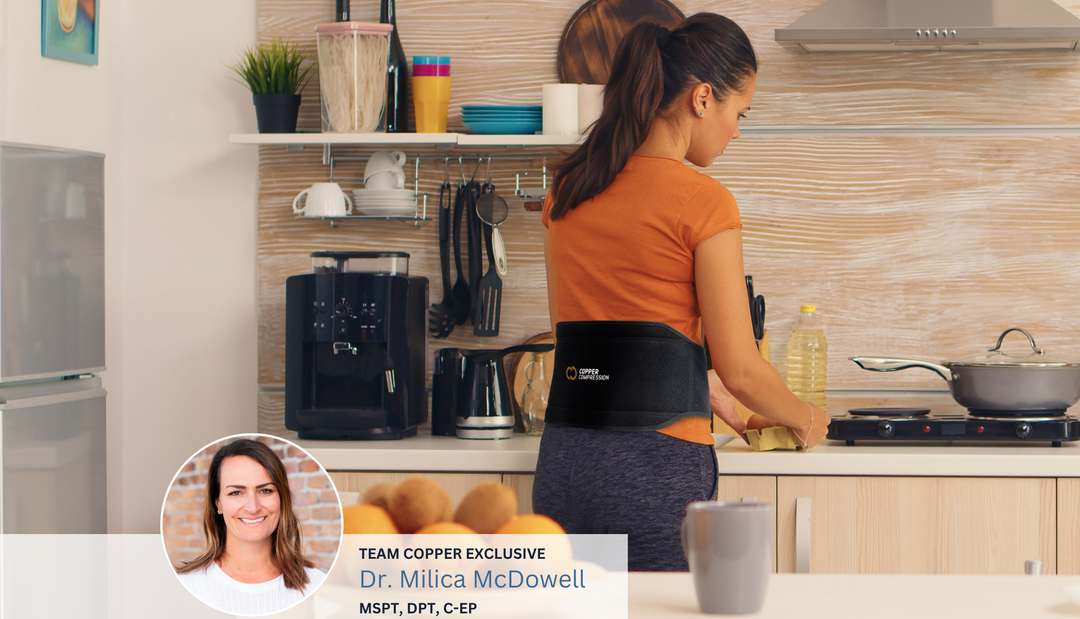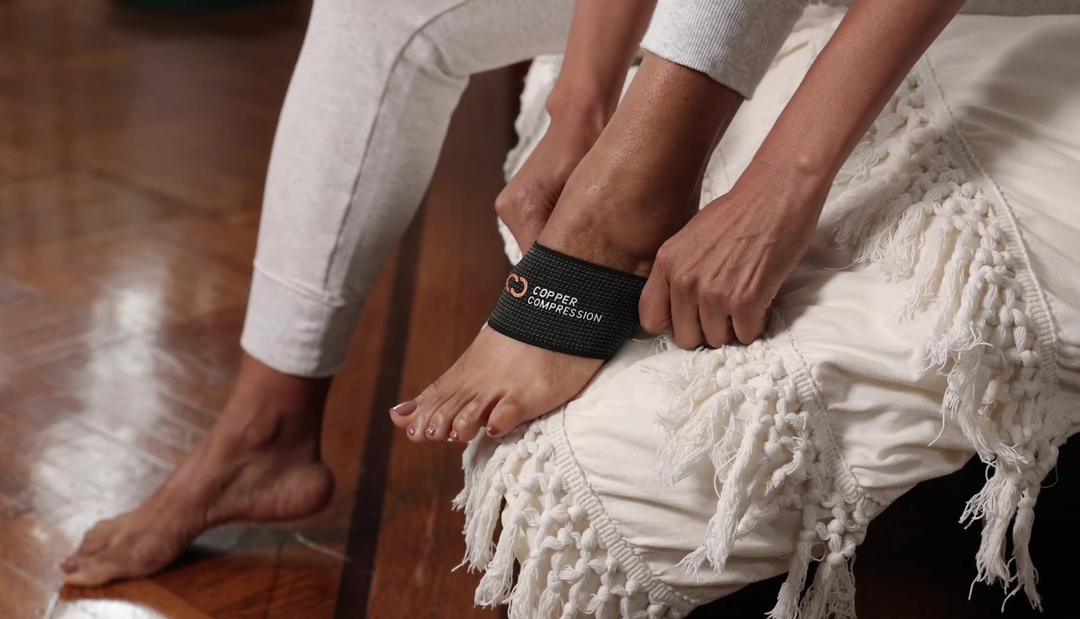Fitness ·
The Best Exercises to Enhance Your Grip Strength
Let's face it: Our hands can get pretty taken for granted. We always assume that we can complete any task we want with our 10-digit limbs, even it if means heavy lifting.
That’s why we’re so surprised when our grip strength isn’t quite as powerful as we thought.
The reality is that our hands could use a workout that isn’t just focused on typing, grabbing, or general everyday use. Even those of us that don’t need to use our hands for large tasks should probably be working our grip strength a bit more. Daunting at first, we know - but it's actually not nearly as hard as it sounds. In fact, you can do some grip exercises while you're at work, watching TV, or even reading a book.
How, you ask? Read on to find out how to get a grip on grip strength!
What Muscles are Used While We Grip?
QUIZ TIME! Question: which part of your arm is doing most of the work while gripping an object? If you guessed fingers, you’d only be half right - there’s a whole other set of muscles being used that we don’t consider. Let’s break it down:
While we grip, lift, or hang, the majority of the work is actually being done between the elbow and the upper forearm bones, by what are called “extensor muscles”. The rest of the work is being done by our fingers and thumb.
These extremities work together with our legs to lift, or on their own when we hang onto things.

Pretty interesting, right? So now that we know there’s a whole other group of muscles at play, it might make more sense that we treat our hands and arms with the same level of workout training that our legs get.
Now that we know the how, let’s get into the why!
What Are the Benefits of Strengthening Your Grip?
There are so many! Training any muscle in our body can be beneficial later on, especially ones that we use every single day. Here are just a few of the many advantages to strengthening your grip:
-
Grip Training Lessens Your Chance of Developing Arthritis
Studies show that one of the best ways to decrease the risk of Arthritis is to maintain a healthy grip function. Even just using a handheld grip strengthener once a day can keep your muscles from getting rusty and atrophied.
For those already suffering from Arthritis, mild grip strengthening can be great to ease discomfort and keep your joints functioning. -
Grip Training Can Help to Prevent Tendonitis and Carpal Tunnel
Tendonitis is a painful tendon inflammation that most often occurs when the tendons in use are suddenly forced to do quick, sharp, repetitive movements that they aren’t used to, for prolonged periods of time. Exercising after a long break without stretching, playing the same sport for years, and even texting can cause it.
Grip strength helps prevent tendonitis in the arms and hands by consistently using and training your tendons, allowing them to be warmed up and ready for any hard lifting, exercise, or sudden movement.
-
Grip Training Can Improve Resilience to Injuries
The stronger the tissue, the more resistance to injury, and the faster the recovery if an injury does happen. Simple as that!
This is particularly important for athletes, runners, and those who are consistently lifting heavy things.
-
Better Grip Strength = Heavier Lifting with Longer Endurance
Deadlifters, listen in (and if you’re not a deadlifter, listen anyway): grip strength is pivotal for exercise improvement.
To put it simply, a stronger hold means more lifts, more reps, and more results. You’ll consume more calories, gain more muscle, and shed more weight - all by training your grip muscles. What’s better than that? We’re not sure.
The 4 Different Kinds of Grip
This blog is full of interesting facts, and we’re not done yet! Did you know there are actually multiple kinds of grip technique that you’re probably utilizing without even knowing it?
Here’s a guide to get familiar with what your hands are doing while you’re completing a task:
-
The ‘Supporting’ Grip: This grip is a little more all-encompassing, and is activated when we’re hanging off of things, climbing, or carrying heavy objects from point A to point B. Arguably the most frequently used grip in our day-to-day lives.
-
The ‘Extension’ Grip: The extension grip is typically for grabbing large objects, as it requires us to expand our fingers and thumbs apart. Imagine lifting a stack of books or swinging a dumbbell - that hand extension is what this grip is used for
-
The ‘Crushing’ Grip: This is the focused grip between the palm of your hand and your fingers. Aptly named, we use this grip to crush things with our hands, or give a firm handshake (hopefully not at the same time).|
-
The ‘Pinching’ Grip: Press your fingers against your thumb. That’s the pinch grip! This group of muscles is usually used when writing, turning a page, or grabbing small objects.
How Can I Tell How Strong My Grip Is?
Now that you know the benefits, the how-to’s, and the grip types, you may want to know where your grip strength is currently and see how you can improve.
The only surefire way to test your grip strength (as far as we know) is to use a handgrip dynamometer. These run pretty cheap online, and give immediate results.
Just squeeze the dynamometer 3 times with each hand and you’ll receive a score.
Don’t know what your score might mean? Here’s a helpful chart to help you figure out where your grip stands on average:
|
Excellent |
≥1411 lbs (≥64 kg) |
|
Great |
123 - 1411 lbs (56 - 64 kg) |
|
Above Average |
114 - 122 lbs (52 - 55 kg) |
|
Average |
105 - 113 lbs (48 - 51 kg) |
|
Below Average |
96 - 104 lbs (44 - 47 kg) |
|
Poor |
88 - 95 lbs (40 - 43 kg) |
|
Very Poor |
≤88 lbs (≤40 kg) |
Think that your grip strength could use a little work? Read on for some easy exercises to help improve that score:
4 Great Exercises for Grip Strength Improvement

-
The Dead Hang: To complete this exercise, all you need to do is hang from an overhead bar without touching the ground for as long as possible. Action movies make it look easy, but in reality this is quite difficult!
If untrained, you may find you can only hang on for 20-30 seconds at a time. This is normal - just keep trying! -
Plate Pinches: Use your fingers and thumb to pinch a set of weight plates. Lift them up, carry them around, and set back down. This exercise is great for our fingers, thumb, and joints! Plus, it’s pretty easy to do.
-
Hand Grips: Looking to improve your grip without hitting the gym? Grab a set of hand grips to work your hands while you’re idle, working, or idly working. Just squeeze the grip for about a minute, 3-5 times a day.
-
Farmer-Style Carrying: Named after hard-working farmers, the goal of this exercise is simple: just pick up any heavy object (within reason), walk for as long as possible while carrying said object, then put it down when you get tired. When you’re ready, start again.
Perfect for improving your supporting and extension grip. -
The Classic Deadlift: A fan-favorite, deadlifting helps us improve our grip strength while being aided by the grip strength already accumulated. To put it another way, deadlifting helps us train our grip which helps us deadlift more. A symbiotic relationship to get swole, if you will.
Be sure you know how to properly deadlift weights before you start. Here's our handy blog that breaks down how to deadlifting properly.








